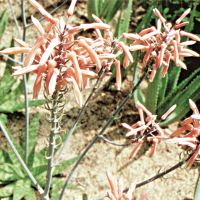| 독성 |
The major symptoms of overdose are griping and severe diarrhoea with consequent losses of fluid and electrolytes. Treatment should be supportive with generous amounts of fluid. Electrolytes, particularly potassium, should be monitored in all recipients, especilly in children and the elderly 1).
As with other stimulant laxatives, products containing Aloe should not be used in patients with intestinal obstruction or stenosis, atony, severe dehydration with electrolyte depletion, or chronic constipation 1).
Aloe should not be administered to patients with inflammatory intestinal diseases, such as appendicitis, Crohn disease, ulcerative colitis, irritable bowel syndrome, or diverticulitis, or to children under 10 years of age. Aloe should not be used during pregnancy or lactation except under medical supervision after evaluating benefits and risks. Aloe is also contraindicated in patients with cramps, colic, haemorrhoids, nephritis, or any undiagnosed abdominal symptomss such as pain, nausea, or vomiting 1, 2).
Aloe-containing products should be used only if no effect can be obtained through a change of diet or use of bulk-forming products. Stimulant laxative products should not be used when abdominal pain, nausea, or vomiting are present. Rectal bleeding or failure to have a bowel movement within 24 hours after use of a laxative may indicate a serious condition. Chronic use may cause dependence and need for increased dosages, disturbances of water and electrolyte balance(e.g. hypokalaemia), and an atonic colon with impaired function 1).
The use of stimulant laxatives for more than 2 weeks requires medical supervision.Chronic abuse with diarrhoea and consequent fluid and electrolyte losses may cause albuminuria and may result in cardiac and neuromuscular dysfunction, the latter particularly in the case of concomitant use of cardiac glycosides, diuretics, corticosteroids, or liquorice root. Laxative containing anthraquinone glycosides should not be used continuously for longer than 1-2 weeks, owing to the danger of electrolyte imbalance.
Decreased intestinal transit time may reduce absorption of orally administered drugs 3).
Existing hypokalaemia resulting from long-term laxative abuse can potentiate the effects of cardiotonic glycosides and antiarrhythmic drugs such as quinidine 3). The induction of hypokalaemia by drugs such as thiazide diuretics, adrenocorticosteroids, and liquorice root may be enhanced, and electrolyte imbalance may be aggravated 4).
Aloe should not be used during pregnancy except under medical supervision after benefits and risks have been evaluated 5).
Antranoid metabolites appear in breast milk. Aloe should not be used duringlactation execpt under medical supervision, as there are insufficient data available to assess the potential for pharmacological effects in the breast-fed infant 3, 5).
Oral use of Aloe in children under 10 years old is contraindicated.
Abdominal spasms and pain may occur after even a single dose.Overdose can lead to colicky abdominal spasms and pain, as well as the formation of thin, watery stools 1).
Chronic abuse of anthraquinone stimulant laxatives can lead to hepatitis 6).
Long-term laxative abuse may lead to electrolyte disturbances, metabolic acidosis, malabsorption, weight loss, albuminuria, and haematuria 3, 7, 8).
Weakness and orthostatic hypotension may be exacerbated in elderly patients when stimulant laxatives are repeatedly used 4). Secondary aldosteronism may occur owing to renal tubular damage after aggravated use. Steatorrhoea and protein losing gastroenteropathy with hypoalbuminaemia have also been observed, as have excessive excretion of calcium in the stools and osteomalacia of the vertebral column 9, 10).
Melanotic pigmentation of the colonic mucosa has been observed in individuals taking anthraquinone laxatives for extended time periods 2, 7).
The pigmentation is clinically harmless and usually reversible within 4 to 12 months after the drug is discontinued 2. 7).
Conflicting data exit on other toxic effects such as intestinal-neuronal damage after long term use 7, 11).
1) Goodman and Gilman's the pharmacological basis of therapeutics, 8th ed. New York, McGraw Hill, 1990.
2) Bisset NG. Sennae folium. In: Max Wichtl's herbal drugs |


 익생양술에서 "알로에"로 처방에 사용되었음.
익생양술에서 "알로에"로 처방에 사용되었음.
